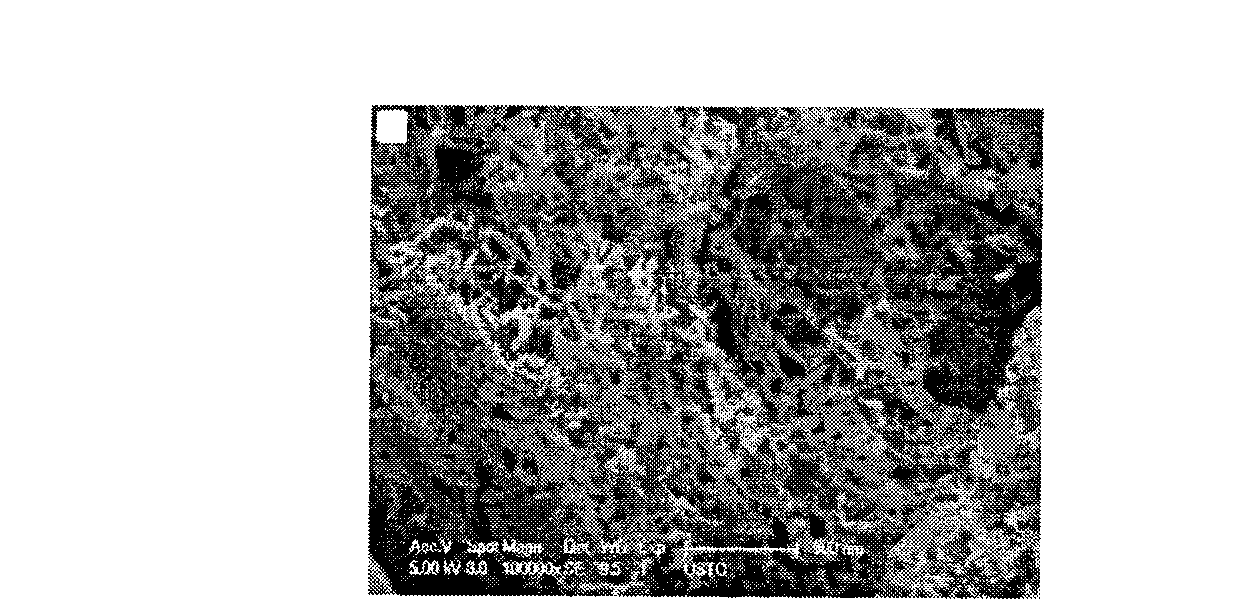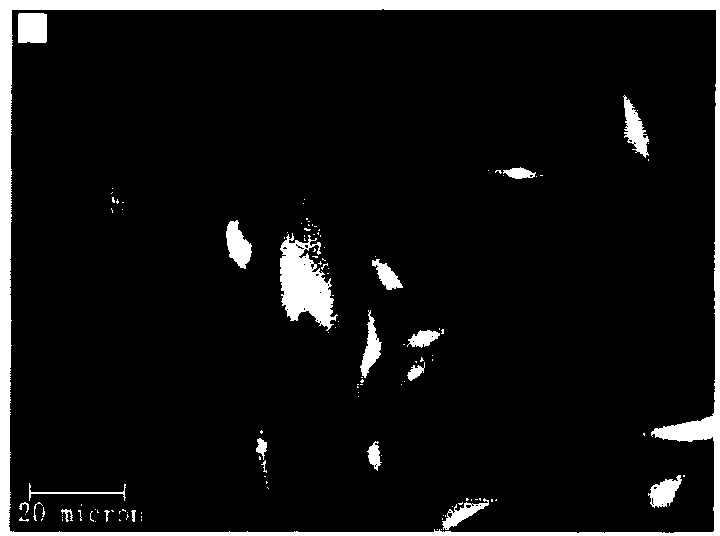Method for preparing repairing material of antibacterial degradable active nanometer composite bionic tone tissue
A nano-composite and tissue repair technology, applied in the field of biomedical engineering, can solve the problems of multi-animal experiments and clinical trials, and achieve the effects of good environment, high output, and simple operation
- Summary
- Abstract
- Description
- Claims
- Application Information
AI Technical Summary
Problems solved by technology
Method used
Image
Examples
Embodiment 1
[0033] The preparation method of the antibacterial and degradable active nanocomposite biomimetic bone tissue repair material is characterized in that it includes the following steps:
[0034] A. Dissolve 8g of conventional hydroxyapatite (HA) in 20ml of 5M hydrochloric acid solution, and mix with 10ml of 2% minocycline in 0.1M hydrochloric acid solution into 100ml of 2% gelatin aqueous solution.
[0035] B. Keep the above mixed solution obtained in a silicone oil reaction bath at 40°C under continuous stirring conditions. Adjust the pH value of the reaction system to 7-8 with 1M NaOH, and react for 2 hours.
[0036] C. After the reaction is complete, adjust the pH value of the reaction system to 7 dropwise with 0.1M hydrochloric acid and sodium hydroxide and keep it stable. Then stand at room temperature and age for 24 hours.
[0037] D. The final reaction product is centrifuged, and the supernatant is discarded; the precipitate is washed with deionized water, centrifuged, ...
Embodiment 2
[0044]A, 9.9721g of calcium chloride (CaCl 2 ) and 5.7309g of sodium dihydrogen phosphate (NaH 2 PO 4 ) was dissolved in 20ml of 1M hydrochloric acid solution. Dissolve 0.2 g of minocycline in 10 ml of 0.1 M hydrochloric acid solution; then mix the prepared calcium / phosphorus solution and minocycline solution into 100 ml of 2% gelatin aqueous solution respectively.
[0045] B. Keep the above mixed solution obtained in a silicone oil reaction bath at 40°C under continuous stirring conditions. Adjust the pH value of the reaction system to 7-8 with 1M NaOH, and react for 2 hours.
[0046] C. After the reaction is complete, adjust the pH value of the reaction system to 7 dropwise with 0.1M hydrochloric acid and sodium hydroxide and keep it stable. Then stand at room temperature and age for 24 hours.
[0047] D. The final reaction product is centrifuged, and the supernatant is discarded; the precipitate is washed with deionized water, centrifuged, and the operation is repeated...
Embodiment 3
[0049] A, 4.51481g of calcium hydroxide (Ca(OH) 2 ) and 5.7309g of sodium dihydrogen phosphate (NaH 2 PO 4 ) was dissolved in 20ml of 1M hydrochloric acid solution. Dissolve 0.2 g of minocycline in 10 ml of 0.1 M hydrochloric acid solution; then mix the prepared calcium / phosphorus solution and minocycline solution into 100 ml of 2% gelatin aqueous solution respectively.
[0050] B. Keep the above mixed solution obtained in a silicone oil reaction bath at 40°C under continuous stirring conditions. Adjust the pH value of the reaction system to 7-8 with 1M NaOH, and react for 2 hours.
[0051] C. After the reaction is complete, adjust the pH value of the reaction system to 7 dropwise with 0.1M hydrochloric acid and sodium hydroxide and keep it stable. Then stand at room temperature and age for 24 hours.
[0052] D. The final reaction product is centrifuged, and the supernatant is discarded; the precipitate is washed with deionized water, centrifuged, and the operation is rep...
PUM
 Login to View More
Login to View More Abstract
Description
Claims
Application Information
 Login to View More
Login to View More - R&D
- Intellectual Property
- Life Sciences
- Materials
- Tech Scout
- Unparalleled Data Quality
- Higher Quality Content
- 60% Fewer Hallucinations
Browse by: Latest US Patents, China's latest patents, Technical Efficacy Thesaurus, Application Domain, Technology Topic, Popular Technical Reports.
© 2025 PatSnap. All rights reserved.Legal|Privacy policy|Modern Slavery Act Transparency Statement|Sitemap|About US| Contact US: help@patsnap.com



